Blog Log, 27 September: A sluggish F1 weekend
 September 29, 2009
September 29, 2009
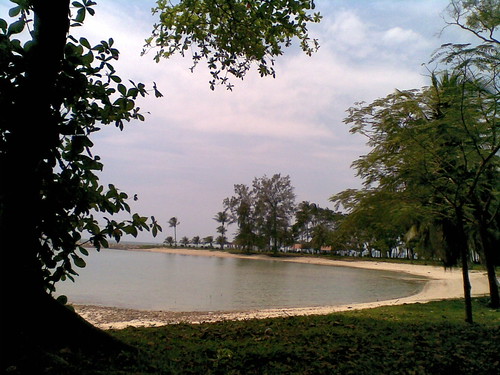
Pulau Hantu west swimming lagoon
We started our single-cylinder bumboat engine and raced toward the island. The sky looked overcast and many divers prophesied rain but it turned out on the contrary to be a really hot weekend! More importantly, what got the divers so eager to get into the water was the fantastic visibility that we observed as we left the marina.

Sea almond trees
Interestingly as with last year during the F1 weekend, I had a non-diver on my boat. So once again I had a relatively dry weekend exploring the islands topside, talking about its history, looking at its plant, bug, bird and reptile life. We saw sandpipers (a winter migrant), Zebra doves, Common mynahs, Brahminy kites, Collared kingfishers, Golden orioles, While-bellied sea eagles and a large bird of prey that was getting chased by crows! We waded into the mangroves on Hantu island and walked amongst Pencil fish, gobies, and an assortment of juvenile fish that sought shelter in the shallow waters. We also observed a massive Longtom from the surface and schools of young sardines and damselfish! We tested our patience watching the surface for a turtle but no luck there (these things only seem to happen when you’re not expecting it).
Underwater, volunteer dive guide Jimmy Goh borrowed my camera to grab some gorgeous stills:

The first thing Jimmy saw as he descended into the water was this Xeno Crab on whip coral!

A large green sea cucumber
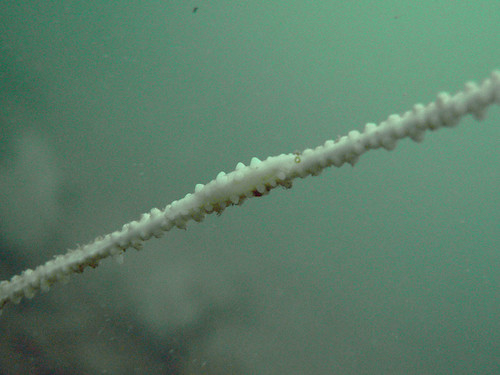
An Allied cowrie (Ovulid) on a whip coral. A biologist currently researching on Ovulids in Singapore has added over 15 new records to Singapore's list! And there's lots more to be discovered!
Ovulids are called “false cowries,” because of their similarity to the true Cowries, but they are a distinct group. However they are closely related to cowries and belong to the same super family (Cypraeoidea). They usually have smaller shells but otherwise resemble the Cypraeidae and share similar mantle protective habits.
The highly colored mantle and sharply contrasting spots in some cowrie species result from accumulation of otherwise noxious chemicals retained from their food in the mantle. This feature seems to be an evolutionary adaptation generally characteristic of the entire Cypraeacea superfamily, and shared with the more advanced nudibranch families. Cowries and OvulidsThese chemicals are stored in their skin where they can protect the snail from fish predation. When under attack the colored mantle seems to camouflage the mollusc and confound predators.
Ovulids are also called Allied cowries because each species tends to live with a specific host organism such as soft corals or sponges. Their adaptation to their host in form and colour is quite astonishing. They take on the shape, colour and texture of their hosts and usually it’s hard to tell where one animal ends and the other begins. Only a close look will reveal the mollusk on its host. Each cowrie has a soft mantle that matches the color and texture of its host although there are notable exceptions. Some species even have false polyps! (Source:
Allied cowries are, in fact, parasites that harm their host. They feed on the host’s tissues, mucus and polyps and absorb pigments that enable the cowries to closely match the host’s color. The host continually regrows the lost tissue so the cowrie never runs out of food.

The mouth, anus and reproductive organ of a large Crinoid (Feather star)
Feather stars, or comatulids, are echinoderms that belong to the class Crinoidea (phylum Echinodermata) which they share with the sea lilies. Unlike the latter group, however, feather stars are not obliged to remain in one place; instead they can swim or even crawl over short distances before attaching themselves to some support. Swimming movements are achieved by waving the arms up and down in a slow, controlled manner. Feather stars are widely distributed throughout tropical and warm-temperate waters, with the main center of their distribution being focused on the Indo-Pacific region. An estimated 550 species are known.
Feather stars are either male or female and fertilization is usually external. Some species retain their eggs on their arms but this is not the usual pattern of behavior. When the larvae hatch they pass through a series of development stages as free-swimming animals known as vitellaria. Eventually these settle and undergo a transformation which initially restricts them to a sessile (attached, not free-moving) state, as in sea lilies. Eventually, however, they develop the familiar arms of the adult feather star and are able to move around. (Source)
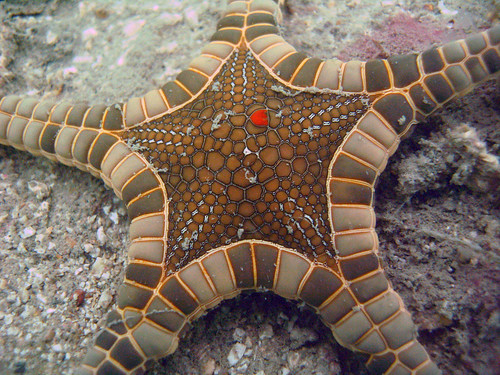
Icon seastar: Pulau Hantu's iconic echinoderm is a threatened species.
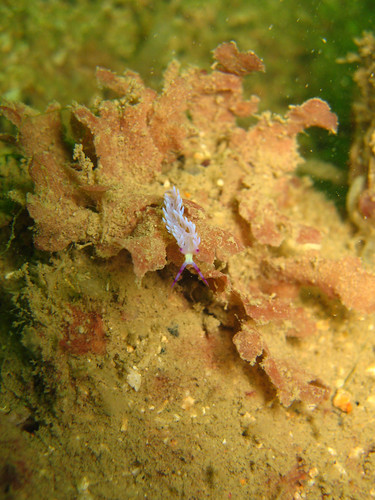
Blue Dragon nudibranch (Pteraeolidia ianthina)

Goby (Bryaninops) on whip coral
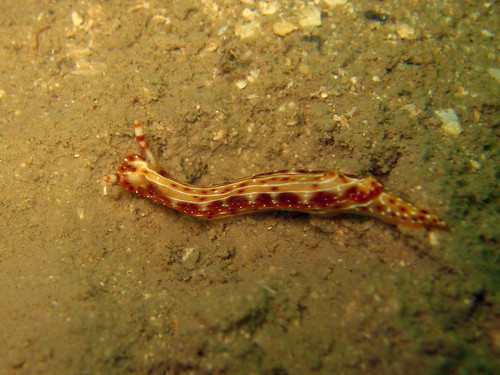
Hypselodoris nudibranch (Hypselodoris maculosa)

Goniopora coral colony
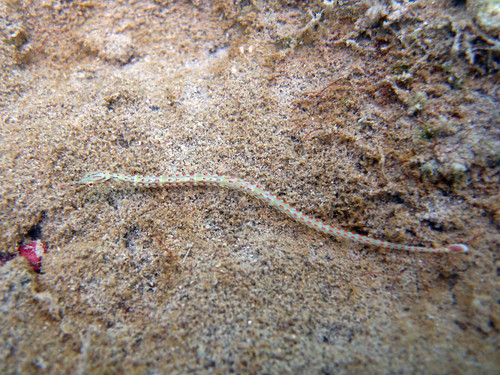
Ocellate pipefish
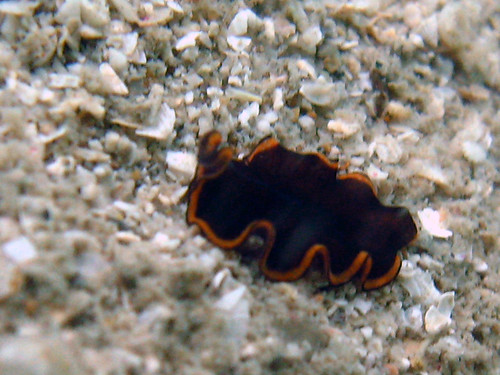
Tiny Flatworm
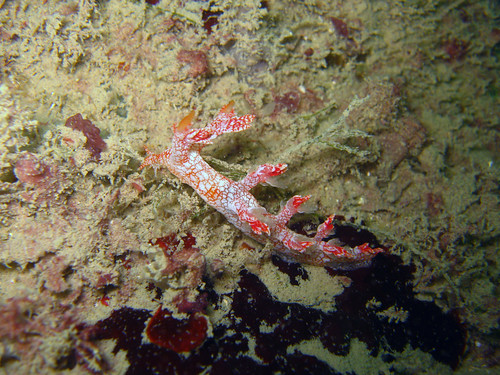
Bornella nudibranch
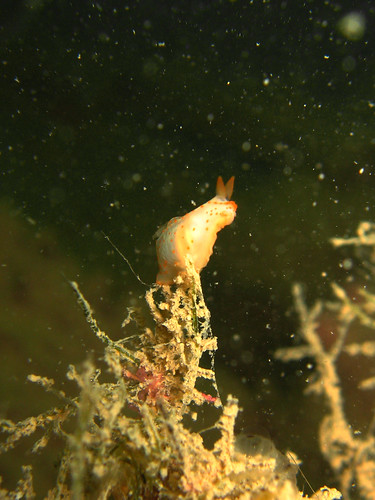
Gymnodoris nudibranch on hydroid

Goby and its burrow
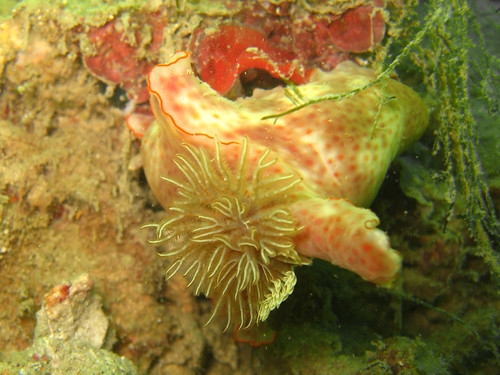
Slender ceratosoma nudibranch

Tritonia nudibranch (Tritonia bollandi) on seafan
Visit the Hantu Blog Gallery for more photos from this dive, or swing by regular Blog diver Chay Hoon’s website for another perspective on the dive!
Volunteer dive guides for this trip were: Jimmy Goh, Tam Wai Meng, Lam Pei Min, and Debby Ng.
 Posted in
Posted in 



 content rss
content rss
COMMENTS